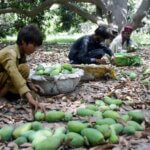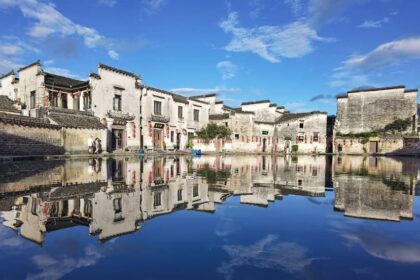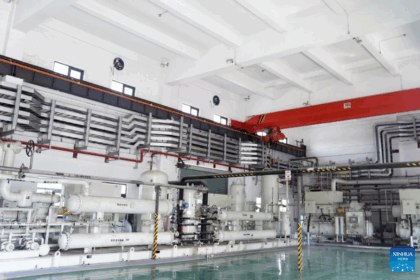Asia’s Climate Crisis: A Region Heating Up at Alarming Rates
Asia is experiencing climate change at a pace nearly double the global average, with 2024 confirmed as one of the region’s warmest years on record. According to the World Meteorological Organization (WMO), average temperatures across Asia have reached 1.04°C above the 1991–2020 baseline. This rapid warming is not just a statistic—it is manifesting in record-breaking floods, heatwaves, accelerating glacier loss, and rising sea levels. The consequences are particularly acute in the Hindu Kush Himalaya (HKH) region, which includes Bhutan, where the impacts of climate extremes are intensifying and cascading through ecosystems and societies.
- Asia’s Climate Crisis: A Region Heating Up at Alarming Rates
- Bhutan: A Small Nation Facing Outsized Climate Risks
- Glacier Retreat: The Melting Water Towers of Asia
- Glacial Lake Outburst Floods (GLOFs): A Growing Threat
- Monsoon Disruptions: From Floods to Droughts
- Water Security: A Crisis in the Making
- Socioeconomic and Environmental Impacts
- Adaptation and Resilience: Bhutan’s Response
- Regional and Global Implications
- Scientific Context: Accelerated Glacier Loss and the “Third Pole”
- Looking Ahead: The Last Decade for Action
- In Summary
Sea surface temperatures across Asian waters have also reached unprecedented highs, warming at nearly twice the global rate. This has contributed to more frequent and severe weather events, including droughts, floods, and glacial lake outburst floods (GLOFs). The effects are not isolated; they ripple across borders, affecting millions of people and threatening the stability of entire regions.
Bhutan: A Small Nation Facing Outsized Climate Risks
Bhutan, nestled in the Eastern Himalayas, is often celebrated for its pristine environment, extensive forest cover, and commitment to carbon neutrality. Yet, despite contributing almost nothing to global greenhouse gas emissions, Bhutan is on the frontlines of the climate crisis. The country’s unique geography—ranging from subtropical plains in the south to towering Himalayan peaks in the north—makes it especially vulnerable to the impacts of a warming world.
More than 70% of Bhutan’s land is covered by forests, and over half is designated as protected areas. The constitution mandates that at least 60% of the country remain forested, a goal Bhutan has consistently exceeded. This commitment has made Bhutan the world’s first carbon-neutral country, with its forests absorbing more carbon than the nation emits. However, these environmental achievements do not shield Bhutan from the consequences of global climate inaction.
Glacier Retreat: The Melting Water Towers of Asia
Bhutan’s glaciers are a critical component of the region’s hydrology, acting as natural reservoirs that release water during the dry season. These glaciers feed 567 glacial lakes and supply water to five major and five minor river systems, as well as thousands of springs. The meltwater supports agriculture, drinking water, and hydropower—the backbone of Bhutan’s economy.
However, climate change is driving rapid glacier retreat. Scientific studies show that glaciers in Bhutan are shrinking at rates nearly twice as high as those in central Himalayan regions. Debris-covered glaciers are melting at 30 to 35 meters per year, while clean glaciers retreat at 12 to 15 meters per year. The presence of proglacial lakes—bodies of water formed at the snout of retreating glaciers—has increased, with 22% of Bhutan’s glaciers now lake-terminating, up from 14% in 2000. These lakes accelerate glacier retreat by raising water temperatures at the terminus and increasing basal melt.
Forecasts under a 2.5°C warming scenario predict more than a 50% reduction in glacierized area and over a 90% reduction in meltwater supply. This has profound implications for water security, agriculture, and hydropower generation, not only in Bhutan but for the 1.6 billion people downstream who rely on Himalayan rivers.
Glacial Lake Outburst Floods (GLOFs): A Growing Threat
As glaciers retreat and proglacial lakes expand, the risk of GLOFs increases. These sudden, catastrophic floods occur when the natural dams holding back glacial lakes fail, releasing vast amounts of water downstream. Bhutan has experienced 18 GLOF events in the last 70 years, with the most recent in 2019 from Thorthormi glacier lake. Currently, 17 glacial lakes in Bhutan are considered potentially dangerous.
GLOFs can devastate communities, destroy infrastructure, and cause loss of life. With most of Bhutan’s population and infrastructure concentrated in river valleys, the stakes are high. The 2024 monsoon season, for example, brought heavy rains that triggered floods and landslides, displacing residents and damaging homes, schools, and health facilities.
Monsoon Disruptions: From Floods to Droughts
The South Asian monsoon is the lifeblood of Bhutan’s agriculture and water systems, delivering about 70% of the country’s annual rainfall between June and September. However, climate change is making the monsoon increasingly erratic. In 2024, Bhutan received an average of 1,161 mm of rainfall during the monsoon—below the normal baseline of 1,269 mm—but the impacts were far from ordinary. The season was marked by roadblocks, landslides, flash floods, and significant disruptions to daily life.
Rainfall patterns are becoming more variable, with periods of intense precipitation followed by drought. This variability undermines the reliability of water supplies, affects crop yields, and increases the risk of both floods and water shortages. The National Centre for Hydrology and Meteorology (NCHM) has reported that nearly 69 springs and 149 sub-watersheds have already dried up, with another 1,586 water sources in the process of drying. These changes threaten the livelihoods of farmers and the food security of rural communities.
Water Security: A Crisis in the Making
Despite being rich in water resources, Bhutan is facing an escalating water crisis. The retreat of glaciers and the drying of springs are depleting vital water sources. Prime Minister Tshering Tobgay has warned that these changes endanger not only the 240 million people living in the Himalayas but also the 1.6 billion people downstream who depend on Himalayan rivers.
Hydropower, which accounts for 99% of Bhutan’s electricity and is a major export to India, is particularly vulnerable. Reduced glacier melt and erratic monsoon rains can disrupt river flows, affecting electricity generation and the country’s economy. The government is exploring new hydropower projects and partnerships with India and Assam, but the long-term sustainability of these efforts depends on the stability of water supplies.
Socioeconomic and Environmental Impacts
The impacts of climate change in Bhutan extend beyond water and energy. Agriculture, which employs over half the population, is highly sensitive to changes in temperature and rainfall. Crop yields are threatened by drought, floods, and the loss of fertile soil due to erosion. The risk of vector-borne diseases, such as malaria and dengue, is increasing as warmer temperatures allow these diseases to spread to higher elevations.
Bhutan’s rich biodiversity is also at risk. Changes in climate and land use are altering habitats, threatening endemic plant and animal species, and increasing the risk of forest fires. The interconnectedness of ecosystems means that disruptions in one area can have cascading effects throughout the region, from the mountains to the mangroves of Bangladesh and India.
Adaptation and Resilience: Bhutan’s Response
Recognizing the urgency of the crisis, Bhutan has implemented a range of adaptation strategies. These include disaster management plans, early warning systems for floods and GLOFs, community-based forest fire management, and efforts to enhance water conservation. The country’s National Adaptation Programme of Action (NAPA) identifies key vulnerabilities and prioritizes projects in disaster risk management, freshwater supply, climate information services, agriculture, health, and forestry.
However, adaptation is not without challenges. The rugged terrain makes it difficult to monitor glaciers and glacial lakes, and there is a shortage of trained glaciologists and resources. Early warning systems have been installed in only a few river basins due to cost and maintenance issues. International support and climate finance are critical to scaling up these efforts and building long-term resilience.
Bhutan is also investing in climate-resilient infrastructure, renewable energy (including wind and solar), and organic agriculture. The government is raising awareness among citizens and strengthening environmental laws. At the international level, Bhutan has joined the G-Zero alliance of carbon-neutral nations and is advocating for increased climate finance and global action.
Regional and Global Implications
The challenges facing Bhutan are emblematic of those confronting the entire HKH region and South Asia. The Eastern Himalayas, often called the “third pole” for their vast stores of ice, are warming faster than almost anywhere else on Earth. The rivers that originate here—the Brahmaputra, Ganges, and their tributaries—sustain over a billion people. As glaciers recede and monsoon patterns shift, the reliability of these water sources is under threat.
Regional cooperation is essential. Initiatives like the “Mountains to Mangroves” project aim to restore forests, protect watersheds, and build resilience across Bhutan, Nepal, Bangladesh, and India. The International Centre for Integrated Mountain Development (ICIMOD) is working with member countries to promote anticipatory action, nature-based solutions, and community-level responses to climate risks.
Scientific Context: Accelerated Glacier Loss and the “Third Pole”
Recent scientific research provides sobering context for the changes underway. Himalayan glaciers have lost at least 40% of their area since the Little Ice Age (400–700 years ago), with the rate of ice loss accelerating tenfold in recent decades. The eastern Himalayas, including Bhutan, are experiencing some of the fastest rates of glacier retreat, driven by rising temperatures and changes in monsoon precipitation.
The “Third Pole”—the high-altitude region encompassing the Hindu Kush, Karakoram, and Himalaya—contains the largest reservoir of glacier ice outside the polar regions. The melting of these glaciers threatens water security, agriculture, and energy production across South Asia. Even if global warming is limited to 1.5°C, one-third of Himalayan ice is expected to disappear by the end of the century.
Looking Ahead: The Last Decade for Action
Experts warn that the world is entering the last decade of action to preserve essential planetary resources, including glaciers. Dr. Pema Gyamtsho, Director General of ICIMOD, emphasizes the injustice of vulnerable communities bearing the brunt of climate impacts despite contributing little to the problem. He calls for coordinated regional and global efforts to achieve just transitions and protect the world’s most fragile ecosystems.
Climate finance is a critical part of the solution. At COP29, world leaders agreed to triple climate finance for developing countries, aiming for $300 billion annually by 2035. Bhutan and other vulnerable nations are advocating for increased support to implement adaptation and mitigation strategies, build resilience, and secure a sustainable future.
In Summary
- Asia is warming at nearly twice the global average, with 2024 among the warmest years on record.
- Bhutan’s glaciers are retreating rapidly, threatening water security, agriculture, and hydropower.
- Glacial lake outburst floods (GLOFs) are a growing risk, with 17 dangerous lakes identified in Bhutan.
- Monsoon patterns are becoming more erratic, causing both floods and droughts, and drying up vital water sources.
- Despite being carbon-neutral, Bhutan faces severe climate impacts and is investing in adaptation and resilience strategies.
- Regional cooperation and increased climate finance are essential to address the cascading impacts of climate change in the Himalayas and beyond.
- Scientific evidence shows accelerated glacier loss in the eastern Himalayas, with profound implications for over a billion people downstream.
- The next decade is critical for global action to preserve glaciers, secure water resources, and protect vulnerable communities.












